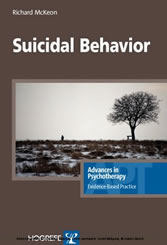Suchen und Finden
4 Treatment (S. 39-40)
While there is substantial evidence that pharmacological treatment of disorders that are risk factors for suicide (such as depression) can be effective, pharmacological studies that have targeted suicide directly have had much more equivocal results. In part, this is because clinical trials of medication have historically excluded those at risk for suicide (as have psychotherapy studies). Evidence for the effectiveness of Lithium in preventing suicide is probably stronger than for any other medication (Cipriani, Pretty, Hawton, &, Geddes, 2005).
Meltzer (1999) has examined clozapine versus olanzapine for patients with schizophrenia or schizoaffective disorder who were at high risk for suicide and found that those receiving clozapine were less likely to attempt suicide or be hospitalized for suicide risk. An area of significant controversy recently has been the relationship between the use of SSRIs and suicide risk. While previously the major debate within the field has focused on whether the significantly increased rates of prescription of SSRIs was responsible for a decrease in national suicide rates in various countries around the world (Safer &, Zito, 2007), fears about the potential role of SSRIs in causing suicide erupted in England and the United States. This concern about suicidality as a possible side effect from the use of SSRIs led the Food and Drug Administration to issue a “black box” warning.
The focus of concern was initially on youths, because the evidence of efficacy for treatment of depression among this group was much more equivocal than the evidence among adults, making the risk/benefit ratio more problematic among youths than adults. Following this warning, prescriptions of SSRIs fell significantly. When the youth suicide rate increased in 2004, after almost a decade of decline, some argued that the decrease in use of SSRIs was to blame. While there may be a subgroup of those who take SSRIs who experience an increase in suicidality (Maris, 2007), this does not mean that they are not safe for most patients, particularly those with serious depression. Gibbons, Brown, Hur, Marcus, Bhaumik, and Mann (2007) report that among male veterans treated with SSRIs, suicide attempts decreased.
However, their effectiveness in preventing death by suicide is still uncertain. A review of the literature by Rudd, Joiner, and Rajab (2001), which focused only on nonpharmacologic interventions, revealed only 25 randomized or controlled studies that targeted suicidality. They divided their review into intervention studies and treatment studies. Intervention studies were those that did not provide any kind of psychotherapy or medication treatment.
These studies made changes in either procedures associated with treatment (letters, phone calls), or facilitated access to mental health services and assessed any subsequent reductions in suicide attempts. Of particular note was a study by 4 Treatment While there is substantial evidence that pharmacological treatment of disorders that are risk factors for suicide (such as depression) can be effective, pharmacological studies that have targeted suicide directly have had much more equivocal results. In part, this is because clinical trials of medication have historically excluded those at risk for suicide (as have psychotherapy studies). Evidence for the effectiveness of Lithium in preventing suicide is probably stronger than for any other medication (Cipriani, Pretty, Hawton, &, Geddes, 2005).
Alle Preise verstehen sich inklusive der gesetzlichen MwSt.








